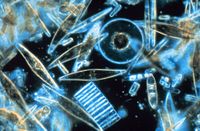
In Vivo Transient and Partial Cell Reprogramming to Pluripotency as a Therapeutic Tool for Neurodegenerative Diseases
Sign Up to like & getrecommendations! Published in 2018 at "Molecular Neurobiology"
DOI: 10.1007/s12035-018-0888-0
Abstract: In theory, human diseases in which a specific cell type degenerates, such as neurodegenerative diseases, can be therapeutically addressed by replacement of the lost cells. The classical strategy for cell replacement is exogenous cell transplantation,… read more here.
Keywords: vivo transient; neurodegenerative diseases; pluripotency; partial cell ... See more keywords

Impact of T-cell depletion on outcome of patients undergoing allogeneic hematopoietic cell transplantation for myelodysplastic syndrome
Sign Up to like & getrecommendations! Published in 2018 at "Bone Marrow Transplantation"
DOI: 10.1038/s41409-018-0136-2
Abstract: Myelodysplastic syndromes (MDS) are clonal stem cell disorders usually characterized by cytopenia and dysplasia. MDS are usually diagnosed during the sixth decade and are associated with reduced life expectancy, mainly related to transformation to acute… read more here.
Keywords: cell depletion; stem cell; transplantation; partial cell ... See more keywords

Application of a partial cell recycling chemostat for continuous production of aroma compounds at near-zero growth rates
Sign Up to like & getrecommendations! Published in 2019 at "BMC Research Notes"
DOI: 10.1186/s13104-019-4213-4
Abstract: ObjectiveThe partial cell recycling chemostat is a modification of the chemostat in which cells are partially recycled towards the bioreactor. This allows using dilution rates higher than the maximum growth rate resulting in higher biomass… read more here.
Keywords: growth rates; recycling chemostat; partial cell; growth ... See more keywords